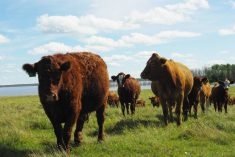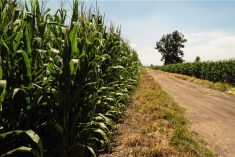Chicago | Reuters — Affordable feed and record-high spikes in cattle prices in 2014 encouraged U.S. ranchers to increase their herds at a faster pace than previously expected during the past year, analysts said in response to a government yearly cattle report on Friday.
Expansion efforts by producers helped turnaround the seven-year decline in the U.S. population from a 63-year low after severe drought hurt crops and forced ranchers to reduce the size of their herds.
The U.S. Department of Agriculture’s annual cattle inventory report showed the U.S. cattle herd as of Jan. 1 at 101 per cent of a year earlier, or up one per cent at 89.8 million head.
Read Also

Trump mulls ending some trade ties with China, including in relation to cooking oil
U.S. President Donald Trump said on Tuesday Washington was considering terminating some trade ties with China, including in relation to cooking oil.
Analysts, on average, expected a 0.1 per cent decline from 88.5 million lavst year.
Friday’s USDA data showed the Jan. 1 cattle population was larger than in 2013 and 2014, but still the third smallest since 1952, said University of Missouri livestock economist Ron Plain.
The results, some of which were revised upward from last year, imply lower-than-anticipated cattle and weaker beef prices beginning in 2016, analysts said.
The inventory figure well above the average trade estimate, which was largrely unchanged, suggests more cattle are available and the breeding herd is growing faster than expected, said Plain.
Analysts expected a more measured response to herd rebuilding, but attractive cattle prices, healthy pasture conditions and affordable feed caused ranchers to be more aggressive than initially thought, he said.
In the past, USDA’s semi-annual cattle reports typically have not influenced Chicago Mercantile Exchange live cattle futures, because the results project cattle production well beyond the contracts listed by the exchange.
But Rich Nelson, chief strategist at Allendale Inc., projected CME live cattle to open 0.3 to 0.4 cents per pound lower on Monday, based on Friday’s report.
USDA’s data deflates the argument about tight supplies this year, and will cause people to revise upward slaughter estimates for 2015, Nelson said.
“We will be raising our numbers for slaughter for this year and when expansion will hit, beginning in 2016 instead of 2017,” said Nelson.
On Thursday, JBS USA said it will expand a Utah beef-processing facility, despite fewer cattle now that forced some of its rivals to close plants.
“We’ve got bigger numbers coming down the road and JBS may have anticipated this better than the rest of us did,” said Plain.
— Theopolis Waters reports on livestock futures markets for Reuters from Chicago.
















